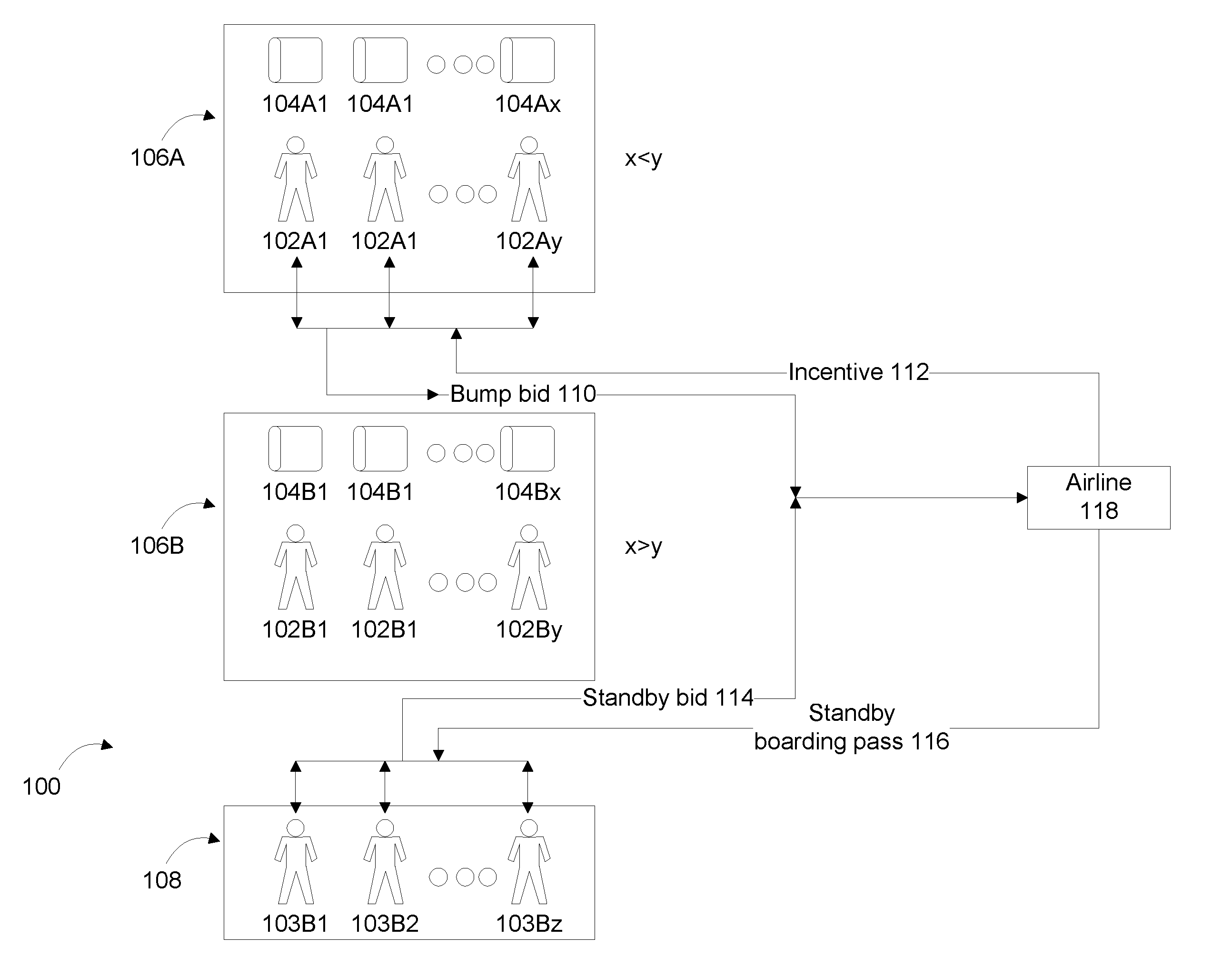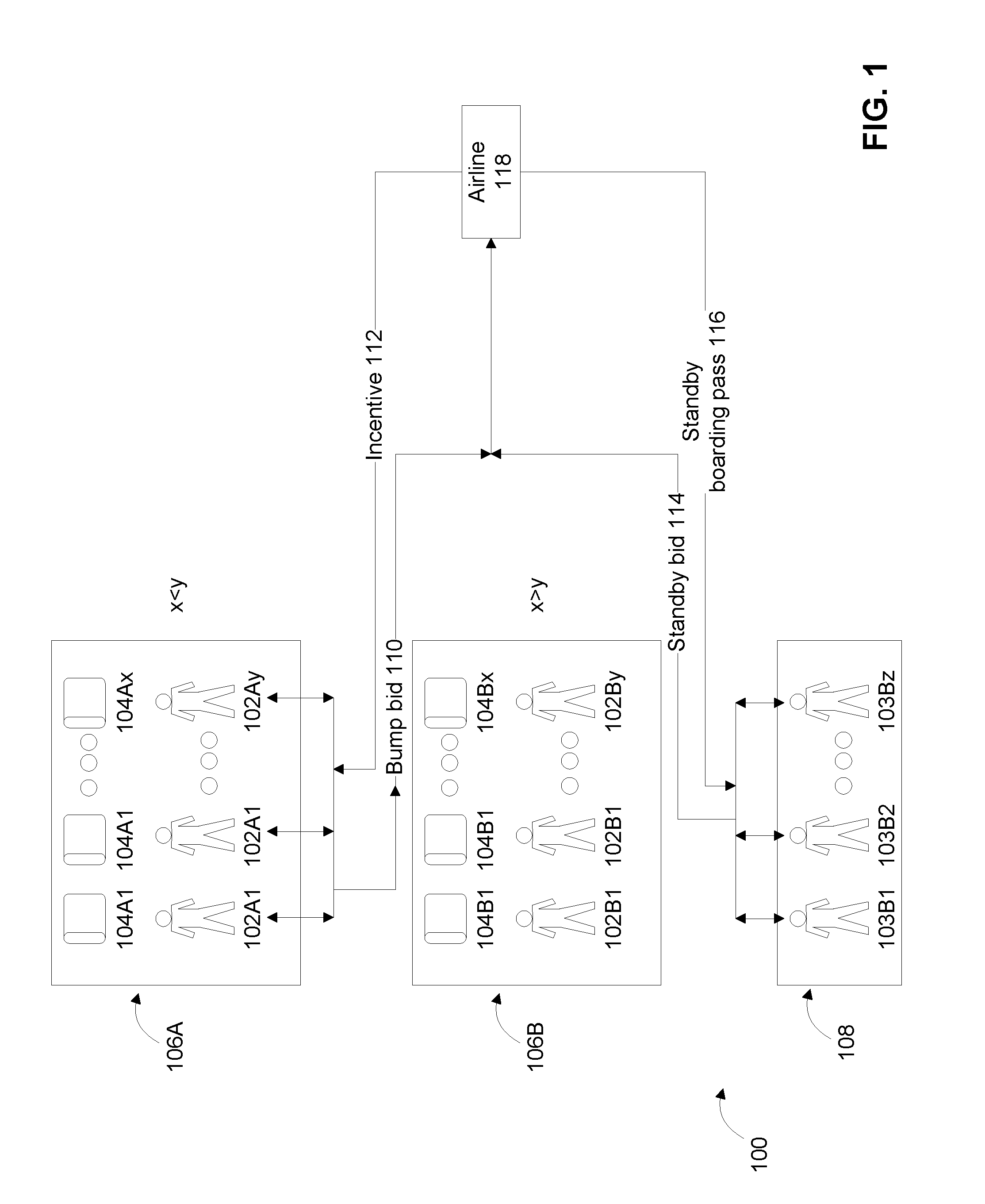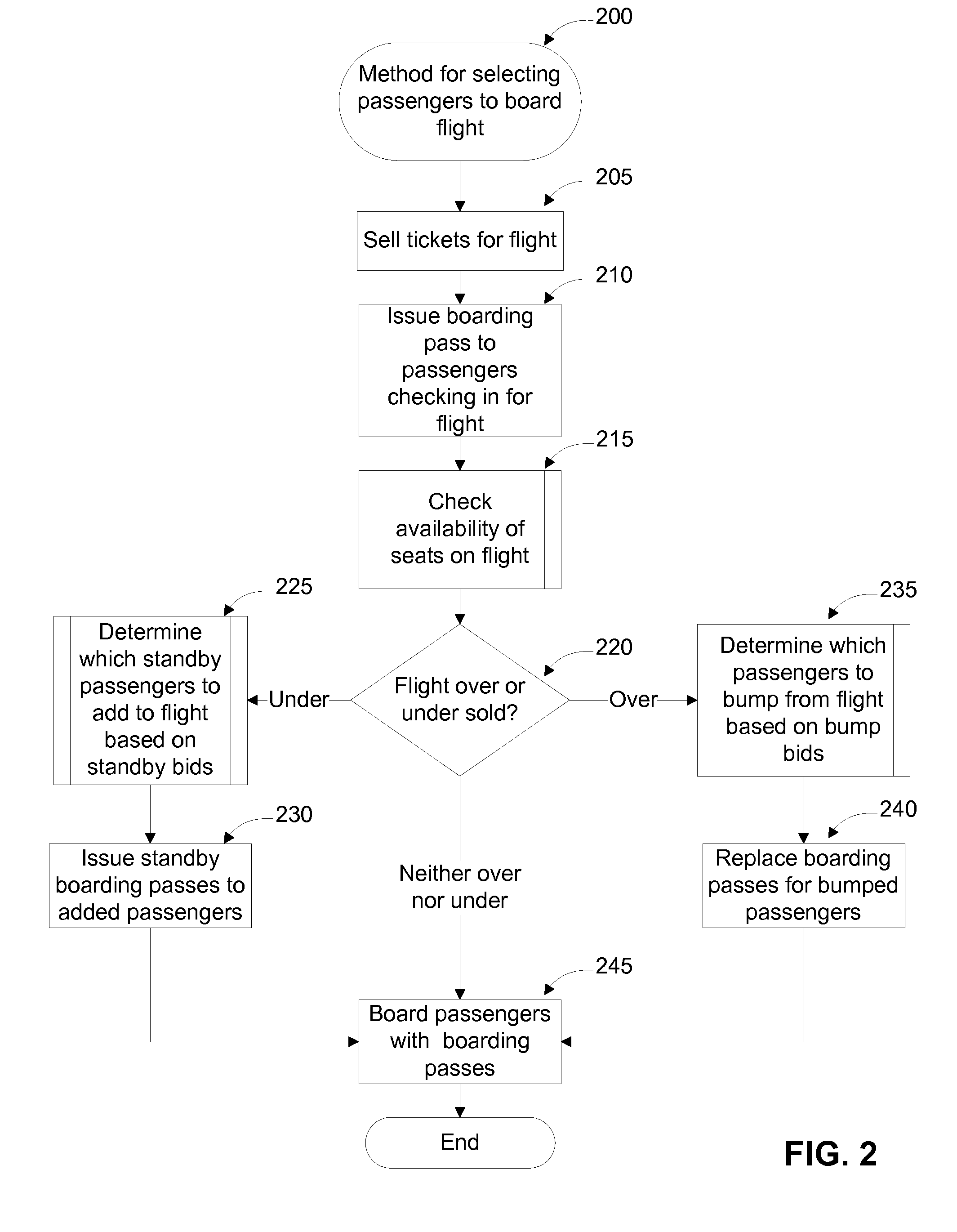System and method for boarding passengers based on bids
a system and passenger technology, applied in the field of systems and methods for receiving bids from passengers and boarding passengers, can solve the problems of flight overbooking or oversold, low marginal cost incurred by an airline by boarding an extra passenger, and empty seats can represent lost revenue, so as to increase the incentive, reduce the cost, and increase the profit of the airline
- Summary
- Abstract
- Description
- Claims
- Application Information
AI Technical Summary
Benefits of technology
Problems solved by technology
Method used
Image
Examples
Embodiment Construction
[0027]The invention enables airlines or other transportation providers to receive bids from ticketed or standby passengers, and to use those bids to determine which passengers to board on an oversold or undersold flight (or other similar transportation vehicles). A method and system for receiving bids from passengers and determining which passengers to board a flight will now be described with reference to FIGS. 1-6, which depict representative or illustrative embodiments of the invention.
[0028]FIG. 1 is a diagram depicting components of a system 100 for receiving bids from passengers 102, 103B according to an exemplary embodiment of the invention. The exemplary system 100 depicted in FIG. 1 includes an airline 118 with two exemplary flights: an oversold flight 106A and an undersold flight 106B. Each flight 106A, 106B includes a number of total seats 104A, 104B, and a number of passengers 102A, 102B with a confirmed seat or checked in for the flights 106A, 106B. In the oversold flig...
PUM
 Login to view more
Login to view more Abstract
Description
Claims
Application Information
 Login to view more
Login to view more - R&D Engineer
- R&D Manager
- IP Professional
- Industry Leading Data Capabilities
- Powerful AI technology
- Patent DNA Extraction
Browse by: Latest US Patents, China's latest patents, Technical Efficacy Thesaurus, Application Domain, Technology Topic.
© 2024 PatSnap. All rights reserved.Legal|Privacy policy|Modern Slavery Act Transparency Statement|Sitemap



